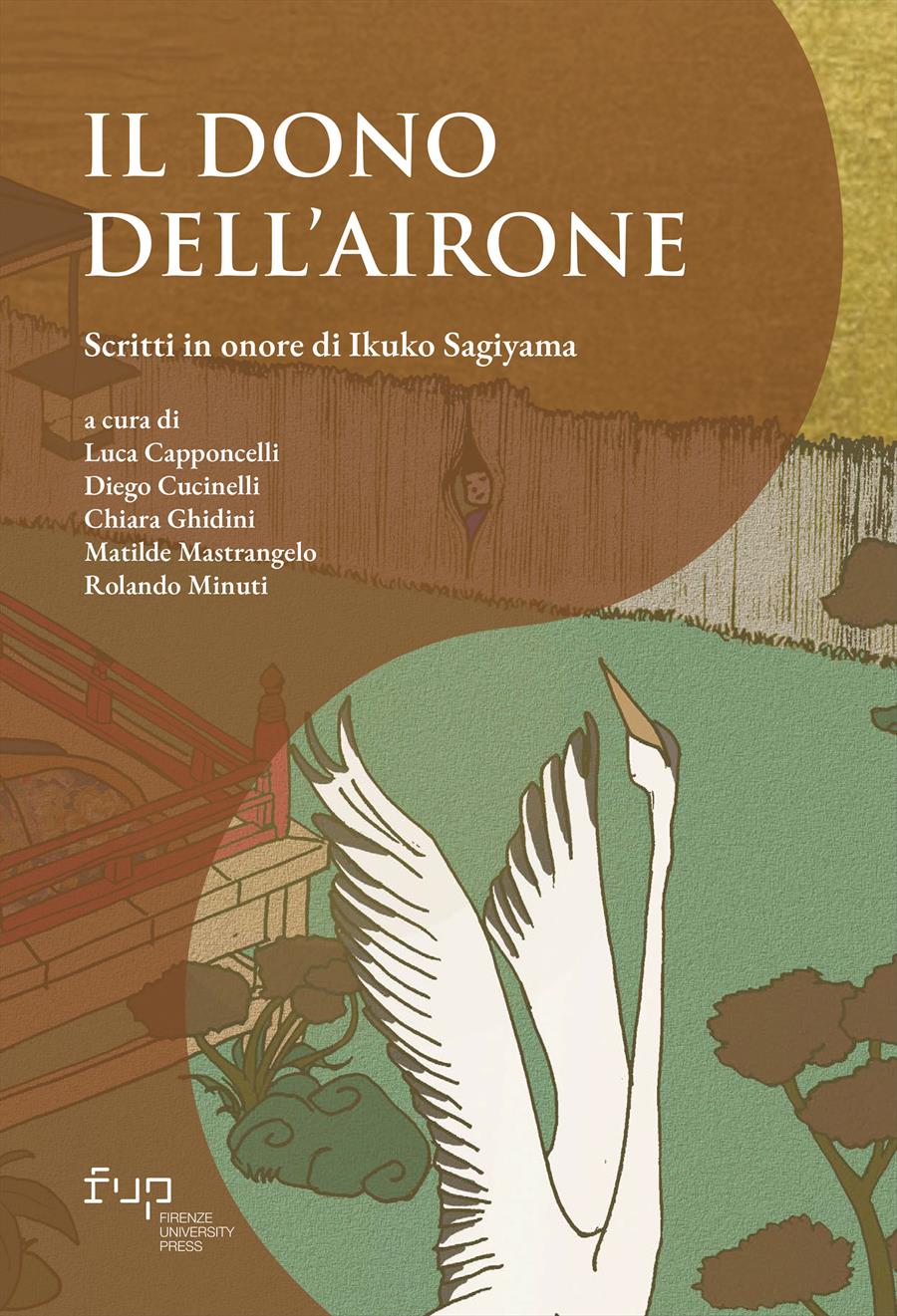- Il dono dell’airone
- A cura di Luca Capponcelli, Diego Cucinelli, Chiara Ghidini, Matilde Mastrangelo, Rolando Minuti
paru o faru? Sulla realizzazione fonetica del fonema /*p/ nella lingua giapponese dei periodi Nara e Heian
- Giuseppe Pappalardo
- © 2024 Author(s) |
- CC BY 4.0
- DOI: 10.36253/979-12-215-0422-4.24
Starting with Hashimoto's work in 1928 and continuing until recent times, the prevailing belief was that the reflex of the phoneme /*p/ of Proto-Japanese was a bilabial fricative [ɸ] as early as the Nara period. This perspective had widespread acceptance. In this paper, I intend to outline the key studies on this topic, particularly those that have critiqued Hashimoto's hypothesis. Special emphasis will be given to Wenck’s theory from 1959, which, despite receiving limited recognition within Japanese scholarship, has significantly contributed to the fields of Japanese philology and phonological research. Moreover, to support the theory suggesting [p] as the most archaic phonetic value, I will provide a detailed account of the reflexes of /*p/ and the underlying diachronic changes in the contemporary language varieties found in the Ryūkyū Islands. Ultimately, this paper will conclude by identifying the phonetic values of the discussed phoneme in Old and Late Middle Japanese, both at the word initial and word medial positions, based on the most viable and phonologically plausible theories available.
- Keywords:
- Old Japanese,
- Early Middle Japanese,
- Historical phonology,
- Labial obstruents,
- Ryukyuan languages,
Ca' Foscari University of Venice, Italy - ORCID: 0000-0002-9889-8554
- Arisaka, Hideyo. 1955. Jōdai on’in kō. Tokyo: Sanseidō.
- Baxeter, William H. e Laurent Sagart. 2014. Old Chinese: A New Reconstruction. Oxford University Press.
- Chamberlain, Basil Hall (assistito da Ueda Kazutoshi). 1889. “A vocabulary of the most ancient words of the Japanese language.” Transactions of the Asiatic Society of Japan 16: 225-85.
- Collado, Diego. 1632. Ars grammaticae japonicae linguae. Roma.
- Dal Corso, Elia. 2022. Materials and Methods for the Study of Ainu Language. Southern Hokkaidō and Sakhalin varieties. Edizioni Ca’ Foscari.
- Edkins, Joseph. 1880. “On the Japanese Letters CHI and TSU.” Transactions of the Asiatic Society of Japan 8: 156-63.
- Frellesvig, Bjarke. 1995. A Case Study in Diachronic Phonology: The Japanese Onbin Sound Changes. Aarhus University Press.
- Frellesvig, Bjarke. 2010. A History of the Japanese Language. Cambridge University Press.
- Hamano, Shoko. 2000. “Voicing of Obstruents in old Japanese: Evidence from the Sound-symbolic Stratum.” Journal of East Asian Linguistics 9: 207-25.
- Hashimoto, Shinkichi. [1928] 1950. “Ha gyō shiin no hensen ni tsuite.” Ristampato in Kokugo on’in no kenkyū. Tokyo: Iwanami. 29-45.
- Hayata, Teruhiro. 1977. Seisei akusento-ron. In Nihongo 5: on’in, a cura di Ōno Susumu e Shibata Takeshi, 323-60. Tokyo: Iwanami.
- Hoffmann, Johann Joseph. 1867. Japansche Spraakleer. Leiden: A. W. Sijthoff.
- Kamei, Takashi. 1960. “Zaitōki no hongō ha-jion ni kansuru kaishaku.” Kokugogaku 40: 126-31.
- Kida, Akiyoshi. 2000. “Kokugo on’inshi-jō mikaiketsu no mondai.” Onsei kenkyū 4 (3): 24-27.
- Kiyose, Gisaburō. 1985. Heian-chō ha gyō shin P-onron. Onsei kenkyū 21: 73-87.
- Komatsu, Hideo. 1981. Nihongo no on’in (Nihongo no sekai 7). Tokyo: Chūō Kōronsha.
- Mabuchi, Kazuo. 1961. “Ennin ‘Zaitōki’ bonji tai chū no kaishaku nit suite.” Kokugogaku 43: 25-30.
- Mabuchi, Kazuo. 1971. Kokugo on’inron. Tokyo: Kasama shoin.
- Martin, Samuel E. 1987. The Japanese Language Through Time. Yale University Press.
- Miyake, Marc Hideo. 2003. Old Japanese: A Phonetic Reconstruction. Londra: RoutledgeCurzon.
- Shibatani, Masayoshi. 1990. The Languages of Japan. Cambridge University Press.
- Shinmura, Izuru. 1928. “Ha-gyō keishinon enkaku kō.” Kokugo kokubun no kenkyū 16: 1-13.
- Siebold, Phillip Franz von. 1826. Epitome linguae japonicae. Batavia.
- Nakama, Mitsunari. 1992. Ryūkyū hōgen no kosō. Tokyo: Daiichi shobō.
- Nakamoto, Ken. 2011. “P-on saikō – ryūkyū hōgen ha gyō shiin p-on no sujō -.” Nihongo no kenkyū 7 (4): 1-14.
- Nakamoto, Masachie. 1976. Ryūkyū hōgen on’in no kenkyū. Hōsei daigaku shuppankyoku.
- Satow, Ernest. 1880. “Reply to Dr. Edkins on ‘CHI’ and ‘TSU’.” Transactions of the Asiatic Society of Japan 8: 164-71.
- Takayama, Michiaki. 1993. “Rendaku to renjōdaku.” Kuntengo to kunten-shiryō 88: 115-24.
- Wenck, Günther. 1959. Japanische Phonetik, vol. 4. Wiesbaden: Otto Harrossowitz.
- Uchida, Tomoko. 2005. “Ueda Kazutoshi P-on kō no gakushijō no hyōka ni tsuite.” Nagoya daigaku kokugo kokubungaku 97: 98-84.
- Ueda, Kazutoshi. [1898] 1903. “P-on kō.” Ristampato in Ueda, Kazutoshi, Kokugo no tame, vol. 2, 32-39. Tokyo: Fuzanbō.
- Vance, Timothy J. 2008. The Sounds of Japanese. Cambridge University Press.
Informazioni sul capitolo
Titolo del capitolo
paru o faru? Sulla realizzazione fonetica del fonema /*p/ nella lingua giapponese dei periodi Nara e Heian
Autori
Giuseppe Pappalardo
Lingua
Italian
DOI
10.36253/979-12-215-0422-4.24
Opera sottoposta a peer review
Anno di pubblicazione
2024
Copyright
© 2024 Author(s)
Licenza d'uso
Licenza dei metadati
Informazioni bibliografiche
Titolo del libro
Il dono dell’airone
Sottotitolo del libro
Scritti in onore di Ikuko Sagiyama
Curatori
Luca Capponcelli, Diego Cucinelli, Chiara Ghidini, Matilde Mastrangelo, Rolando Minuti
Opera sottoposta a peer review
Numero di pagine
390
Anno di pubblicazione
2024
Copyright
© 2024 Author(s)
Licenza d'uso
Licenza dei metadati
Editore
Firenze University Press
DOI
10.36253/979-12-215-0422-4
ISBN Print
979-12-215-0421-7
eISBN (pdf)
979-12-215-0422-4
Collana
Connessioni. Studies in Transcultural History
ISSN della collana
2975-0393
e-ISSN della collana
2975-0261
